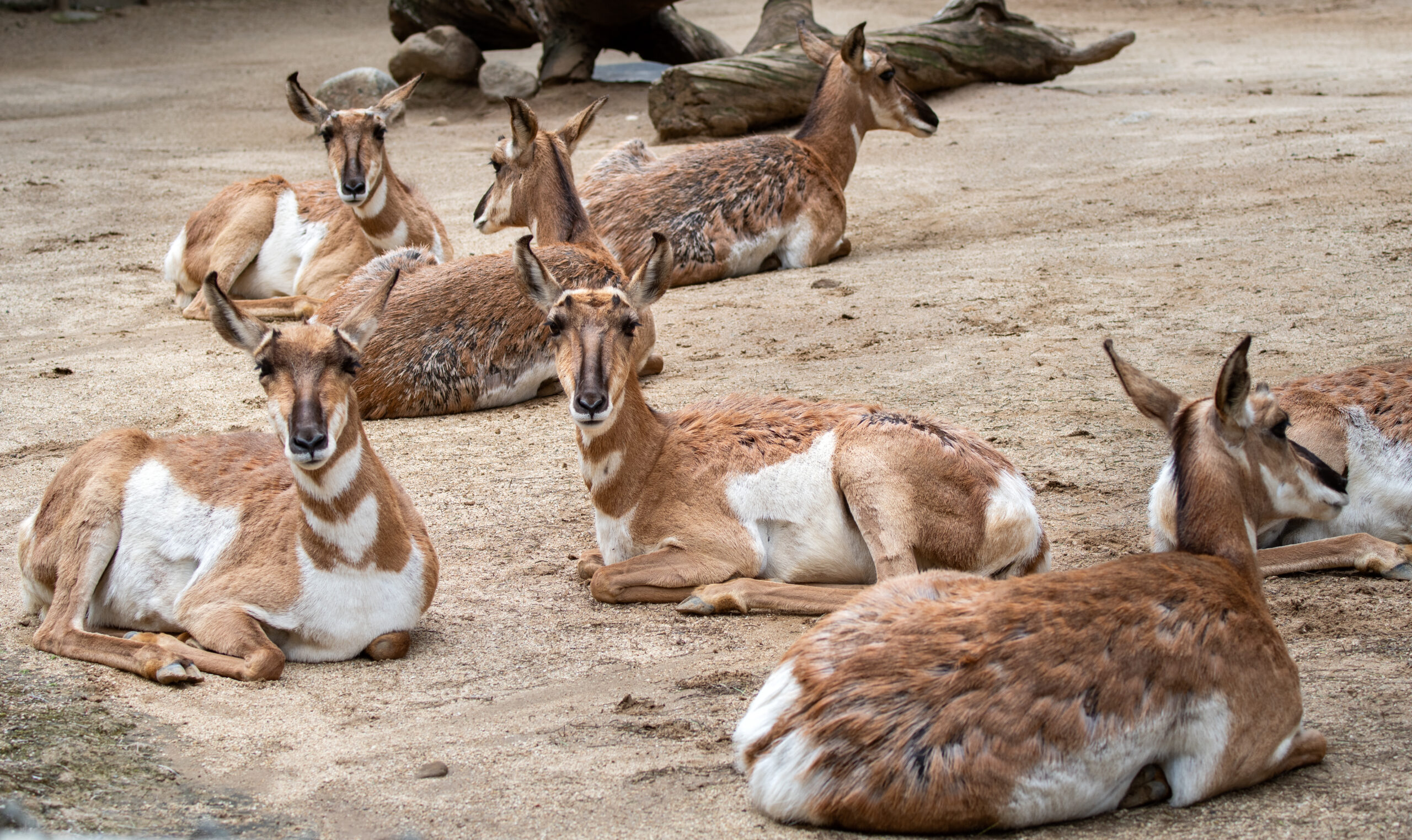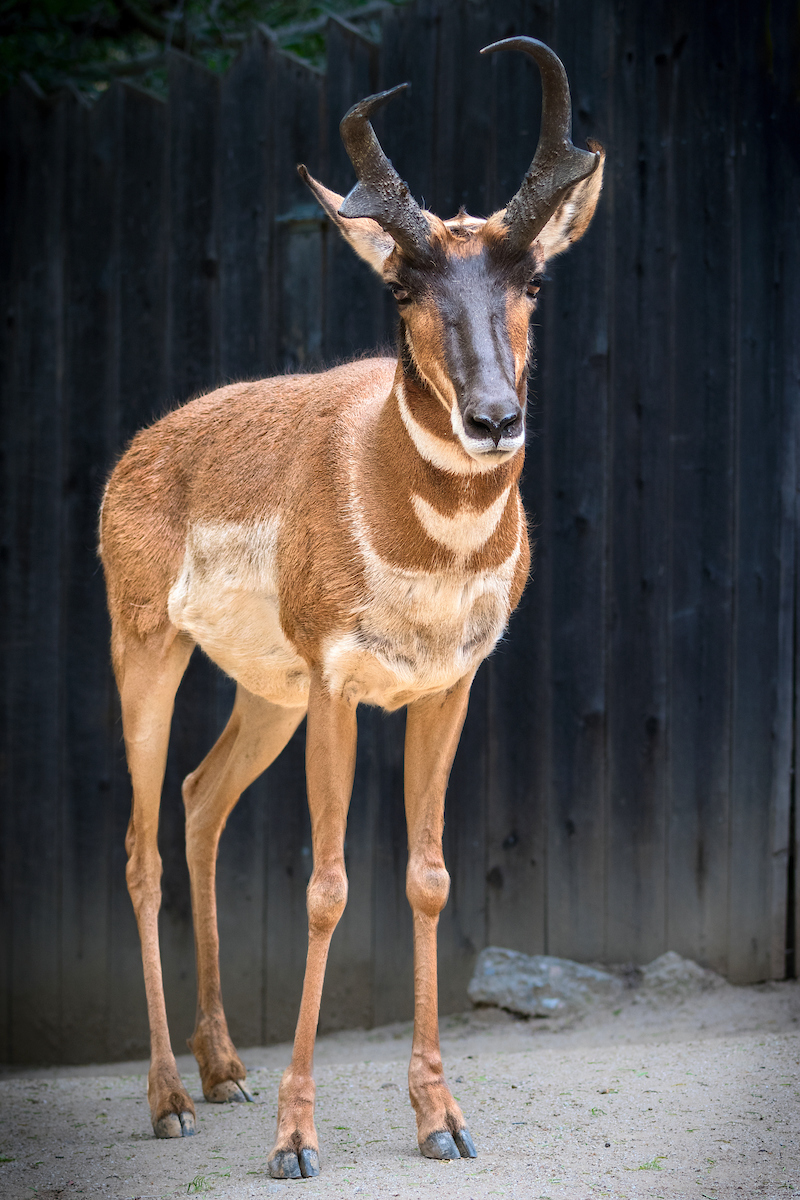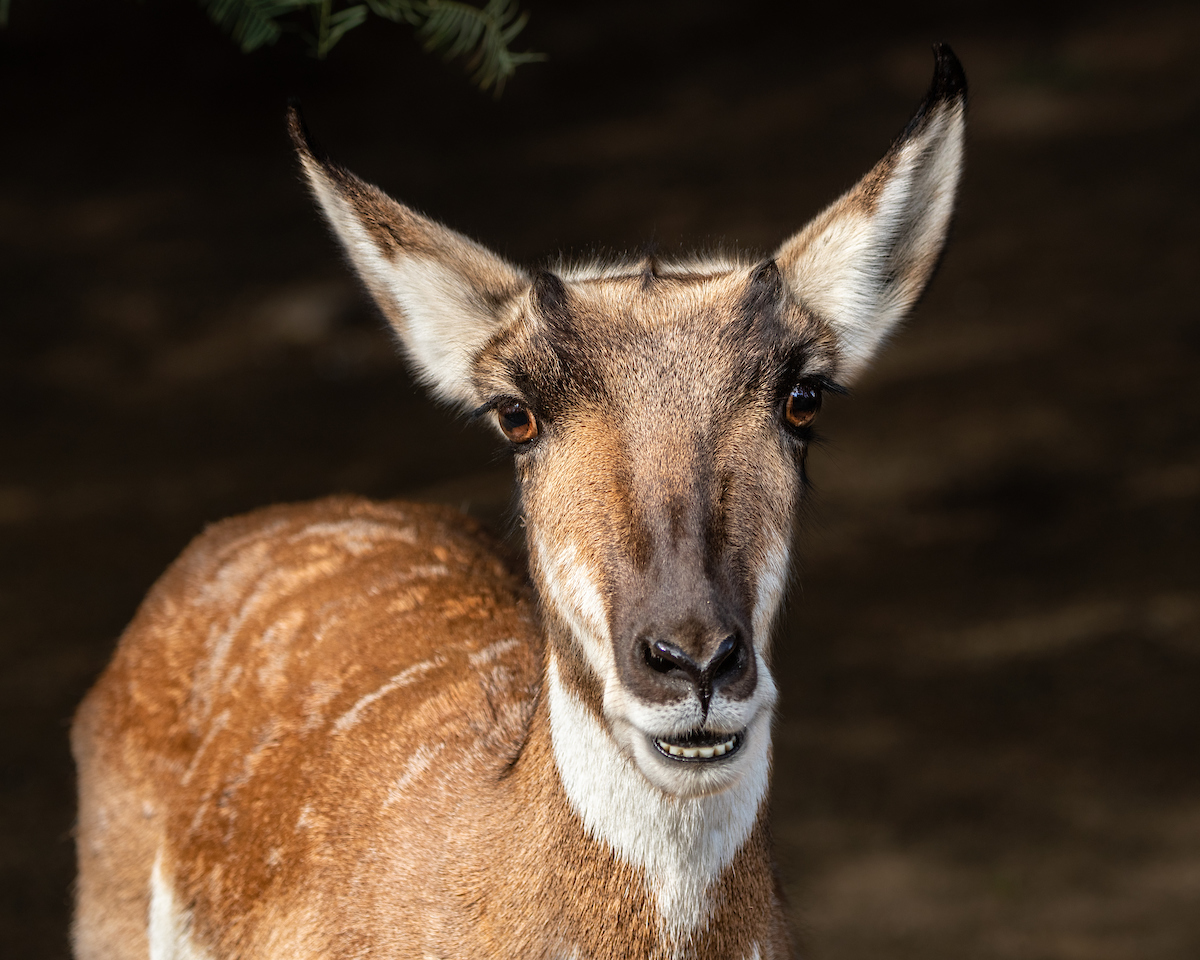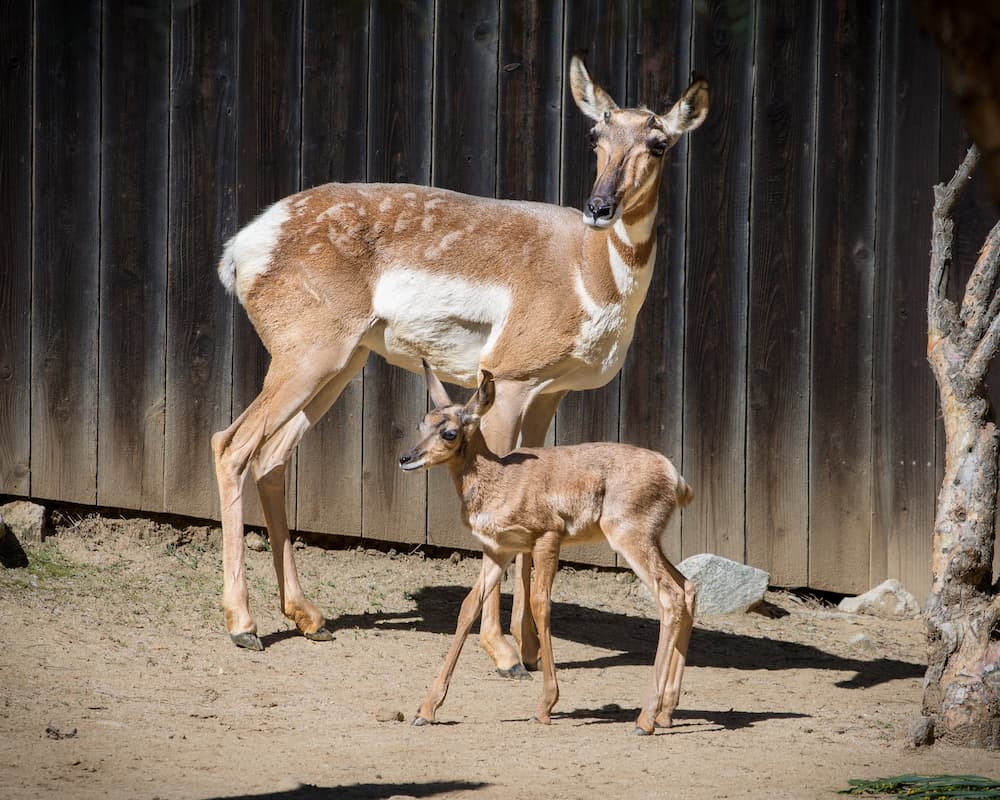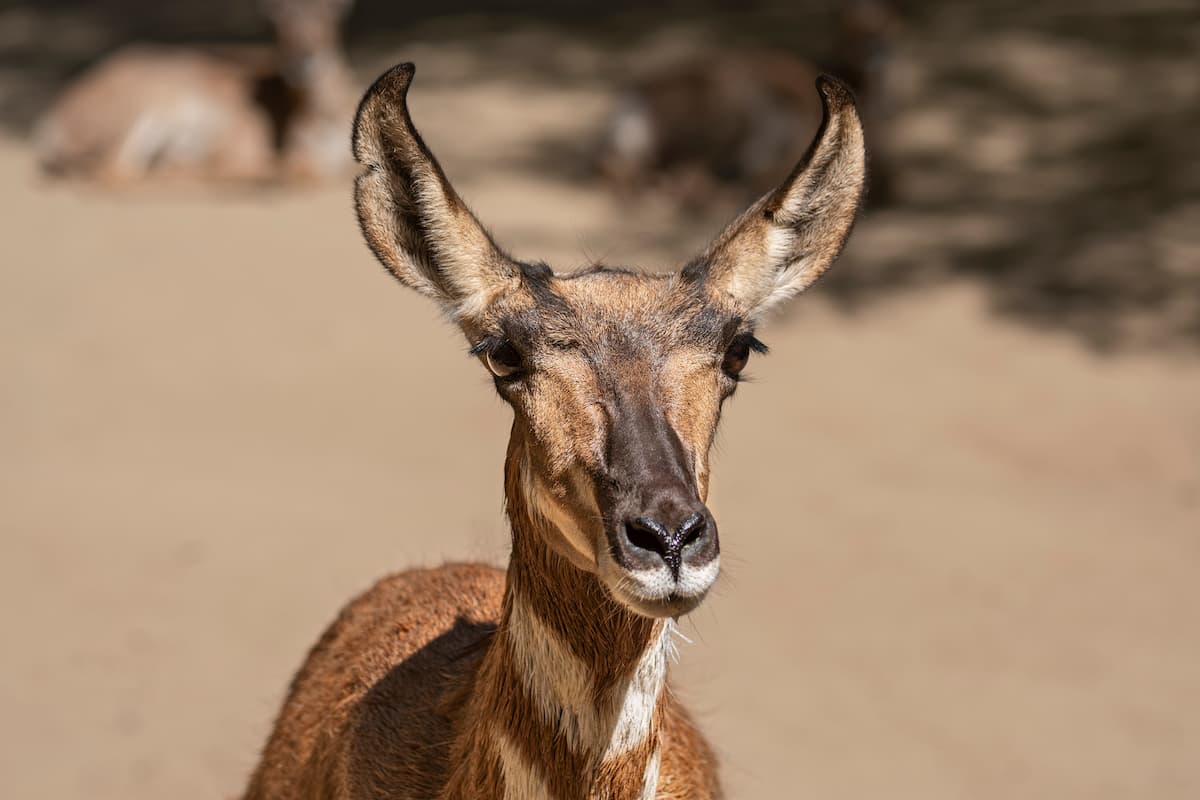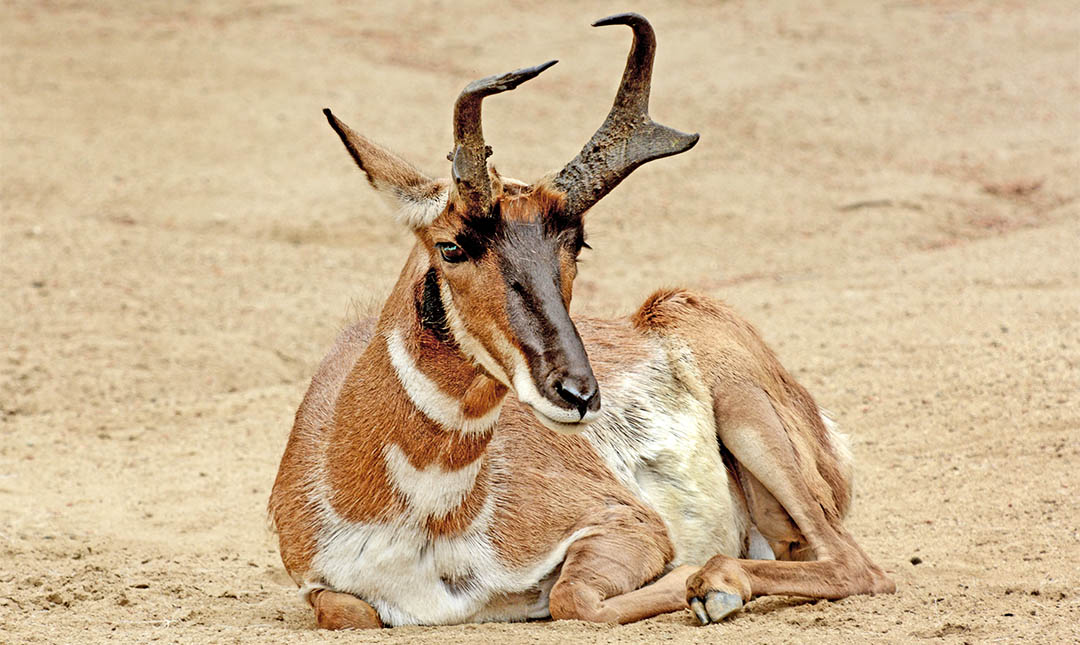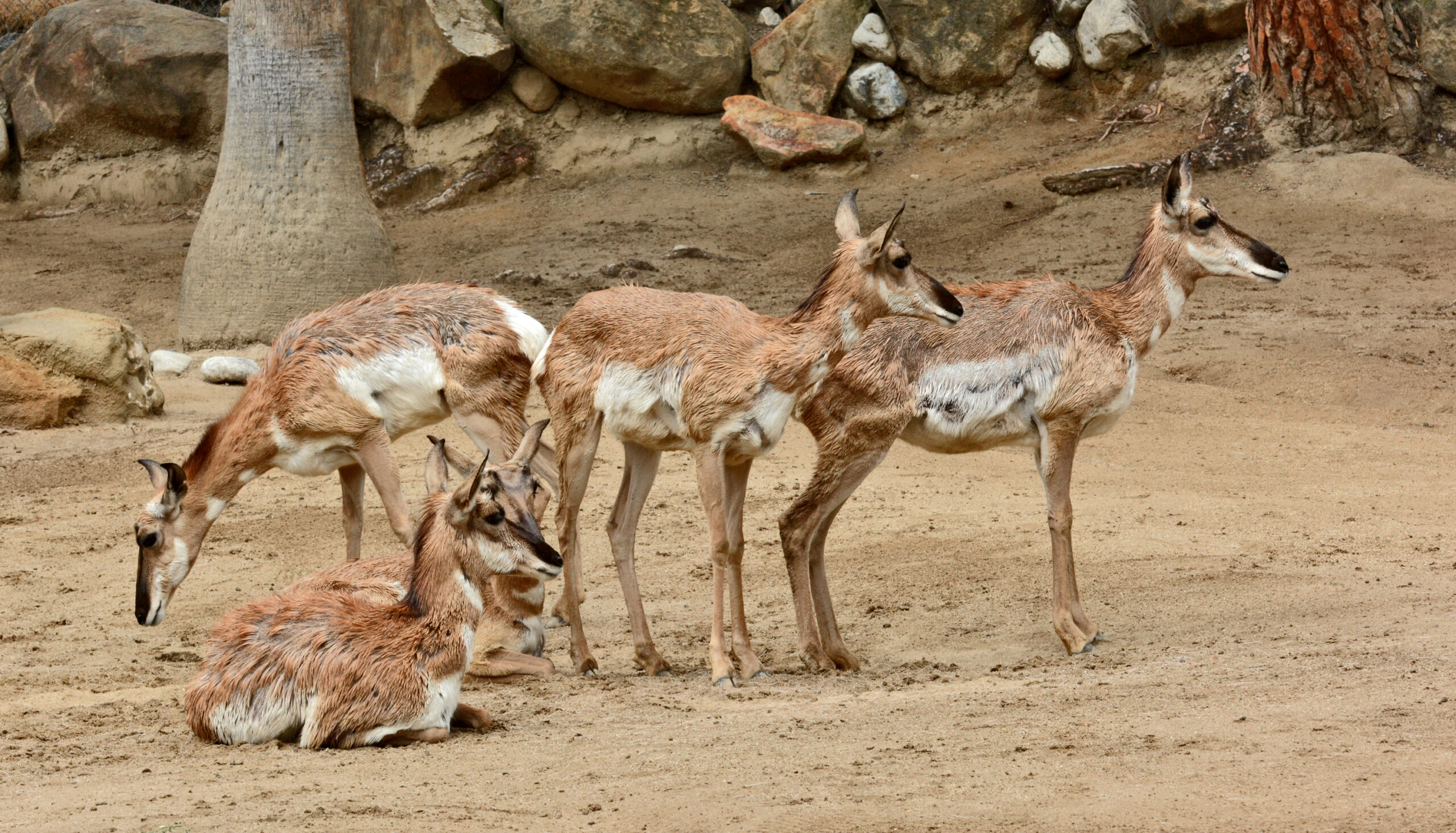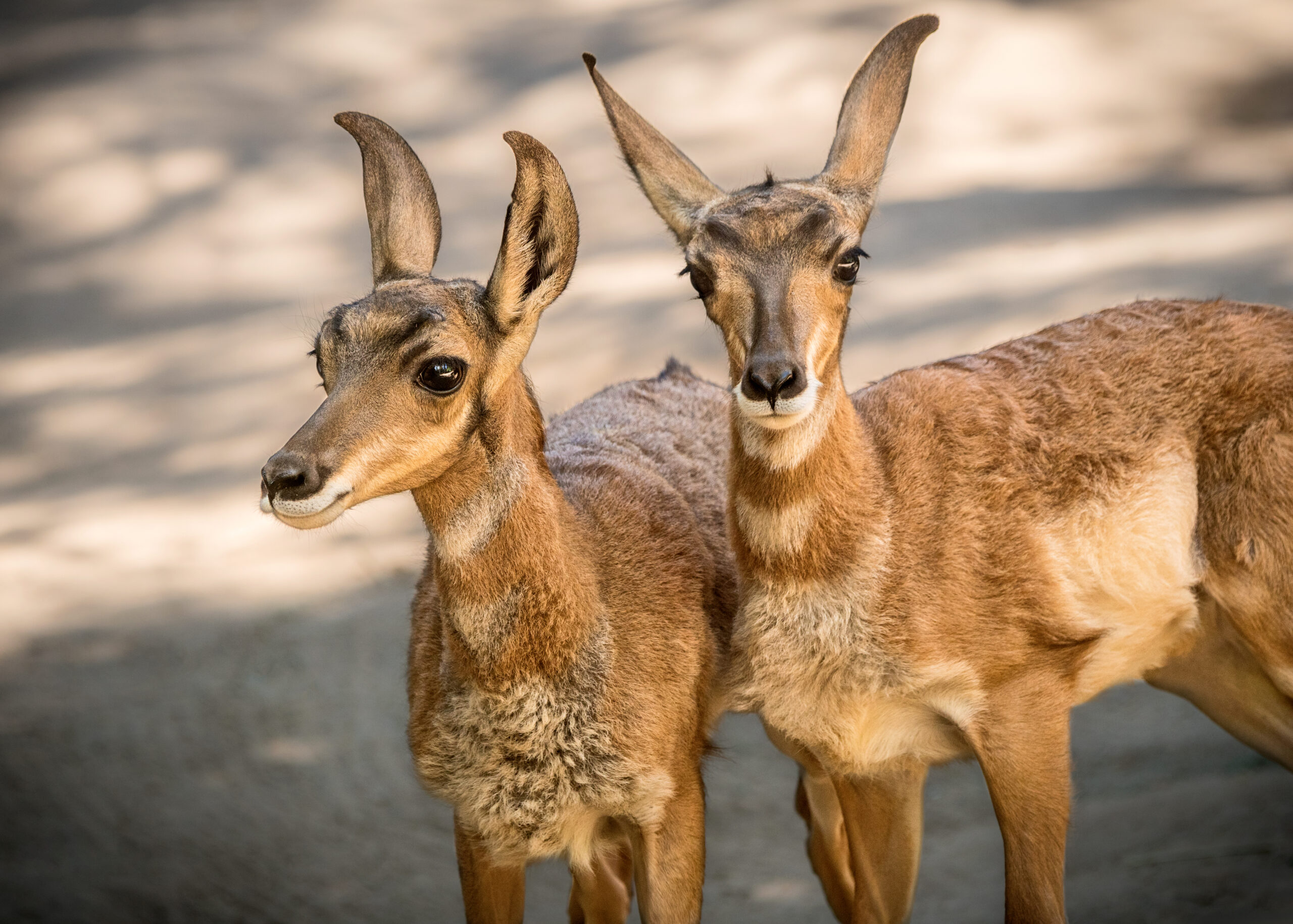About
In their native range of Baja California Sur, Mexico, berrendos (peninsular pronghorn) are known as los fantasmas del desierto—“ghosts of the desert”—because their coloration allows them to blend in so effectively with the surrounding terrain and because they can disappear at high speed. They are the world’s fastest living hoofed mammals and the second-fastest land mammals, able to cruise at 40 to 60 mph for more than an hour. (Cheetahs can run up to 70 mph, but only for short bursts.)
Berrendos are fast from birth; at just four days old, fawns can outrun humans, and in one week, they can outrun dogs and horseback-riders over short distances. Berrendos’ cloven hooves are padded to absorb shock from their 27-foot strides at top speed. Berrendos also run with their mouth open and tongue hanging out to take in more air. Their oxygen consumption is three times greater than similar-sized animals thanks to a windpipe that measures two inches in diameter; by comparison, a human’s measures only three quarters of an inch. With eyeballs the size of an African elephant, their field of vision spans an amazing 300 degrees and they can see miles away.
Berrendos are the only surviving members of the family Antilocapridae, a group of hoofed animals that appeared in the Pleistocene age (10,000 to 1.8 million years ago). They are a niche species between deer and goats and are the only animals with branched horns—not to be confused with antlers. Once numbering in the thousands, today fewer than 25 live in the wild. Since 2000, the Los Angeles Zoo has participated in the Peninsular Pronghorn Recovery Project in the Vizcaino Desert Biosphere Reserve of Baja California Sur, Mexico. In addition, the L.A. Zoo’s breeding herd is part of a Species Survival Plan.
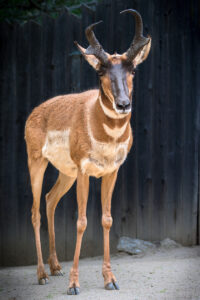
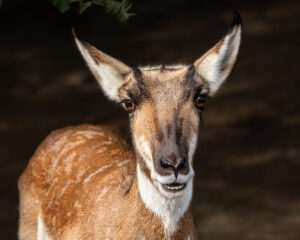

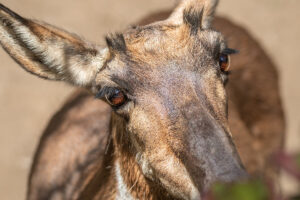
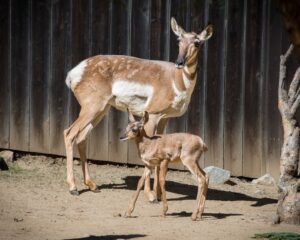

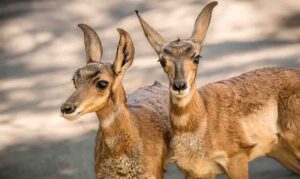
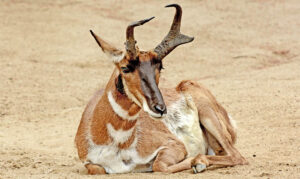

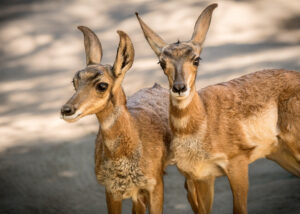
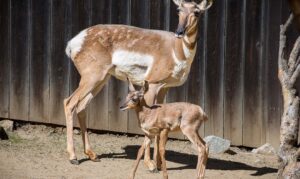

Habitat
Peninsular pronghorn live in the deserts and semi-deserts of Baja California Sur, Mexico.
Diet
Pronghorn are herbivores who survive on a range of tough desert plants including shrubs such as sagebrush, herbaceous plants, cacti, and herbs. They can go for weeks without drinking, deriving the water they need from moisture in the plants they eat.
Physical Characteristics
Adult pronghorn measure up to 35 inches at the shoulder and weigh up to 125 pounds. Males are about 10 percent larger than females. In the wild, peninsular pronghorn live nine to 10 years, but in human care they can live up to 12.

